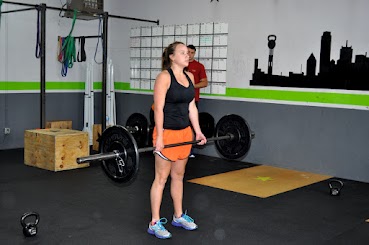
The second pull in the olympic lifts is where the majority of the power on the bar is generated. A rapid extension of the hips followed swiftly by a sharp shrug of the shoulders should apply enough force to move the bar upward. Before an extension of the hips is utilized, the bar should be close to the body and the knees pushed back until there is tension in the hamstrings. The lumbar curve in the lower back should be prominent with the arms straight and the head in a neutral position. After the hips extend and the shoulders start to shrug, the bar should remain close to the body until the 3rd and final pull initiates. If the bar swings out from the hips it could mean a couple of things could have gone wrong such as bending the arms too early, jumping forward and not reaching full extension of the hips, and/or not starting the second pull close to the body and in the proper position.
Next time you try a snatch or clean, think about these different variables if the bar isn’t moving desirably.







